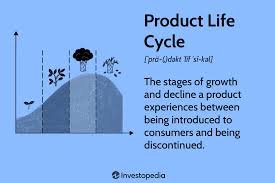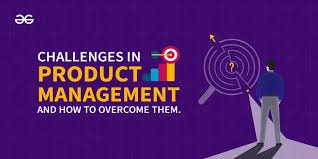Introduction to the Concept of Product as an Entry Point to Additional Product
In today’s competitive market, businesses are continually looking for innovative ways to attract new customers and increase their sales. One effective strategy that has gained significant traction is using a product as an entry point to additional product. This concept involves leveraging a primary product to draw customers in, only to later introduce them to other complementary products or services. The strategy not only enhances the customer experience but also increases revenue potential by broadening the range of products a customer is exposed to.
The approach of using a product as an entry point to additional product is commonly employed by businesses in various industries, from tech companies offering subscription services to retail brands creating bundled product offerings. This article explores how this strategy works, its benefits, and practical examples of businesses that successfully use it.
Table of Contents
Understanding the Strategy: Product as an Entry Point to Additional Product
At its core, the idea of a product as an entry point to additional product is simple: you offer a low-cost or high-value product that acts as a doorway for customers to explore other offerings. The initial product might not generate the highest profit margins, but it acts as a marketing tool to introduce customers to the full range of products available.
This strategy is often used in subscription-based services, software as a service (SaaS) platforms, e-commerce, and retail. A classic example is Amazon’s Prime membership. By offering a relatively low annual fee for Prime, Amazon not only attracts new customers but also encourages them to purchase additional products with the benefits of free shipping, exclusive deals, and other services.
The Psychology Behind Product as an Entry Point to Additional Product
To truly understand why using a product as an entry point to additional product works, we must look at the psychology behind it. The concept is rooted in the principle of reciprocity and commitment. Once a customer has made an initial purchase or commitment, they are more likely to make additional purchases. This behavior is influenced by several psychological triggers:
- The Foot-in-the-Door Technique: Once a customer has committed to buying a low-cost product, they are more likely to purchase other items at a higher price because they have already taken the first step. This gradual escalation of commitment leads to more significant purchases.
- Reciprocity: When businesses offer a customer a product at a discounted rate or give them something valuable, such as access to exclusive content or services, customers feel compelled to reciprocate, often by purchasing additional products.
- Perceived Value: The initial product serves as a value demonstration. Once a customer is satisfied with the first product, they are more likely to trust the brand and buy additional products, believing they will offer similar value.
Examples of Product as an Entry Point to Additional Product

Several companies have effectively employed the strategy of product as an entry point to additional product, and their success can serve as inspiration for businesses looking to adopt this model.
- Apple’s Ecosystem of Products Apple’s approach to using a product as an entry point to additional product is a prime example. The company’s flagship product, the iPhone, acts as an entry point into the Apple ecosystem. Once customers buy an iPhone, they are introduced to other products such as the Apple Watch, MacBook, iPad, and services like iCloud and Apple Music. Each product enhances the customer’s experience, creating a seamless integration that encourages further purchases.
- Amazon Prime Membership Amazon’s Prime membership is another excellent example of using a product as an entry point to additional product. While Prime itself is a product, it offers additional benefits like access to streaming services, exclusive deals, and fast shipping, which entice customers to spend more on Amazon. Through the use of Prime, Amazon has been able to grow its customer base and increase the frequency and size of purchases.
- Subscription Boxes and Consumables Companies offering subscription boxes, such as Dollar Shave Club and Blue Apron, use an entry-level product as a way to entice customers into purchasing more products. Dollar Shave Club offers low-cost razors initially, and once customers are signed up, they are encouraged to purchase additional products like shaving cream, deodorants, and other grooming products. Similarly, Blue Apron offers meal kits that customers can use to create delicious meals, but once the customer is subscribed, they are introduced to additional meal plans and accessories.
The Benefits of Product as an Entry Point to Additional Product
There are several advantages to adopting the strategy of product as an entry point to additional product:
- Increased Customer Retention: Once a customer has purchased a product and is satisfied, they are more likely to return for future purchases. Offering a seamless experience that encourages customers to explore more products can increase customer loyalty and retention.
- Higher Lifetime Value: The primary goal of the strategy is to increase the lifetime value (LTV) of each customer. By encouraging customers to buy additional products over time, businesses can generate higher overall revenue from each customer.
- Cost-Effective Marketing: Instead of spending large amounts on advertising to attract new customers, using a product as an entry point to additional product can serve as a form of organic marketing. Customers who are initially satisfied with their purchase are more likely to recommend the product to others, resulting in word-of-mouth marketing.
- Product Diversification: For businesses with a wide range of products, using an entry-level product to introduce customers to additional offerings allows companies to diversify their sales and increase the chances of customers purchasing products they may not have considered before.
How to Implement the Product as an Entry Point to Additional Product Strategy
Implementing a product as an entry point to additional product strategy requires a well-thought-out plan. Here are some key steps for businesses looking to apply this model:
- Identify Your Core Product: The first step is identifying a product that can serve as an attractive entry point. This product should be affordable, low-risk for the customer, and closely tied to the larger product suite you offer.
- Offer Value and Incentives: Ensure the initial product offers value to the customer. This could be in the form of discounts, unique features, or bonuses that entice the customer to buy more.
- Use Data to Personalize Offers: Use customer data to personalize recommendations for additional products. For example, if a customer purchases a particular product, recommend complementary items or services that are likely to appeal to them based on their buying behavior.
- Create a Seamless User Experience: Once customers purchase the initial product, the experience should naturally lead them to explore other offerings. This could be through in-app recommendations, cross-selling on the website, or email campaigns that promote relevant products.
- Provide Excellent Customer Service: A smooth, hassle-free experience is essential for encouraging repeat purchases. Excellent customer service, easy returns, and clear communication can significantly impact customer satisfaction and increase the chances of additional purchases.
Challenges to Consider with Product as an Entry Point to Additional Product

While the strategy of product as an entry point to additional product is highly effective, there are challenges that businesses must consider:
- Overwhelming Customers: Bombarding customers with too many upsell offers or additional products can overwhelm them and lead to a negative experience. It’s essential to strike the right balance between offering additional products and not being too pushy.
- Customer Loyalty: Although the strategy works for many, there’s always the risk that customers may not return for the additional products. Therefore, businesses must work to keep the initial product valuable enough to maintain the customer’s interest in other offerings.
- Cost of Acquisition: Attracting customers to purchase the entry-level product requires investment. The business must ensure that the cost of acquiring a customer is outweighed by the revenue generated from additional products.
Also read Taleb on Intervention: Understanding the Risks and Rewards
Conclusion: Leveraging Product as an Entry Point to Additional Product for Business Success
In conclusion, using a product as an entry point to additional product is a powerful strategy for businesses looking to enhance customer engagement, increase revenue, and expand their product offerings. Whether through subscriptions, bundled deals, or complementary product recommendations, this approach not only attracts new customers but also builds long-term relationships. By carefully selecting an entry-level product, offering value, and personalizing the experience, businesses can successfully use this strategy to boost their growth and maximize customer lifetime value.


